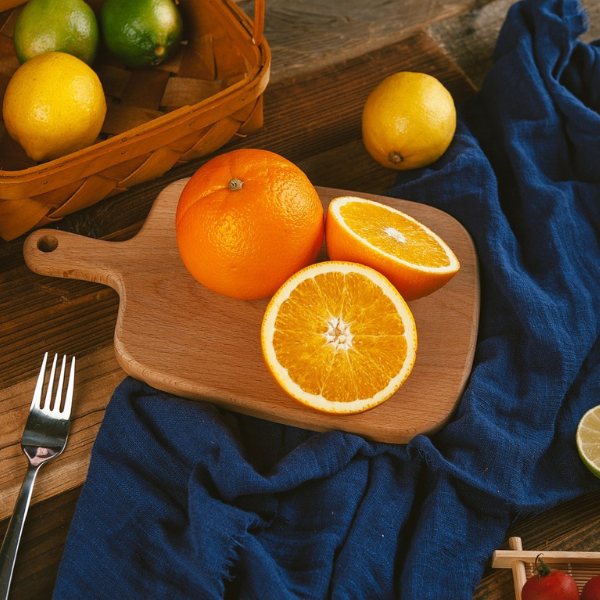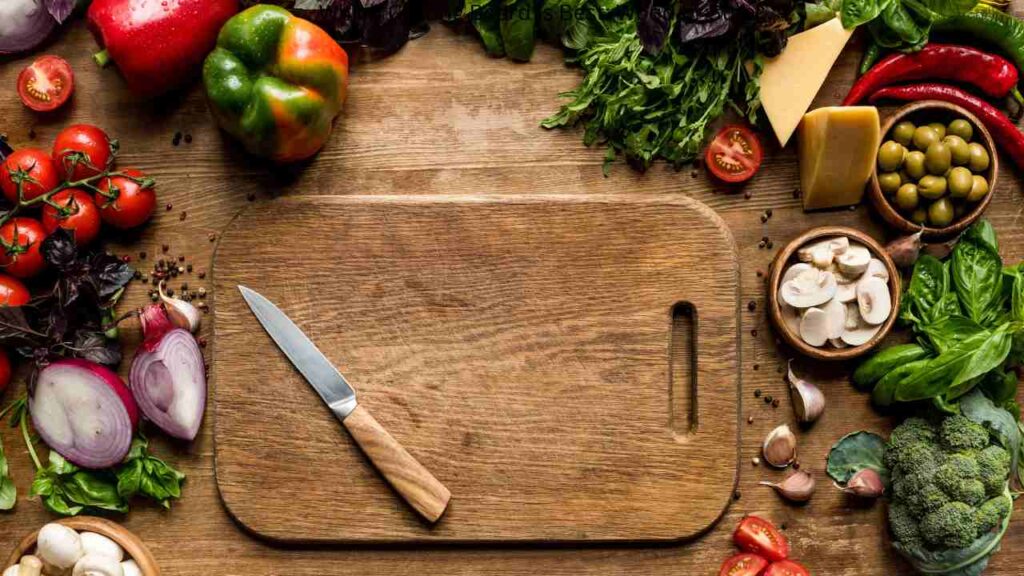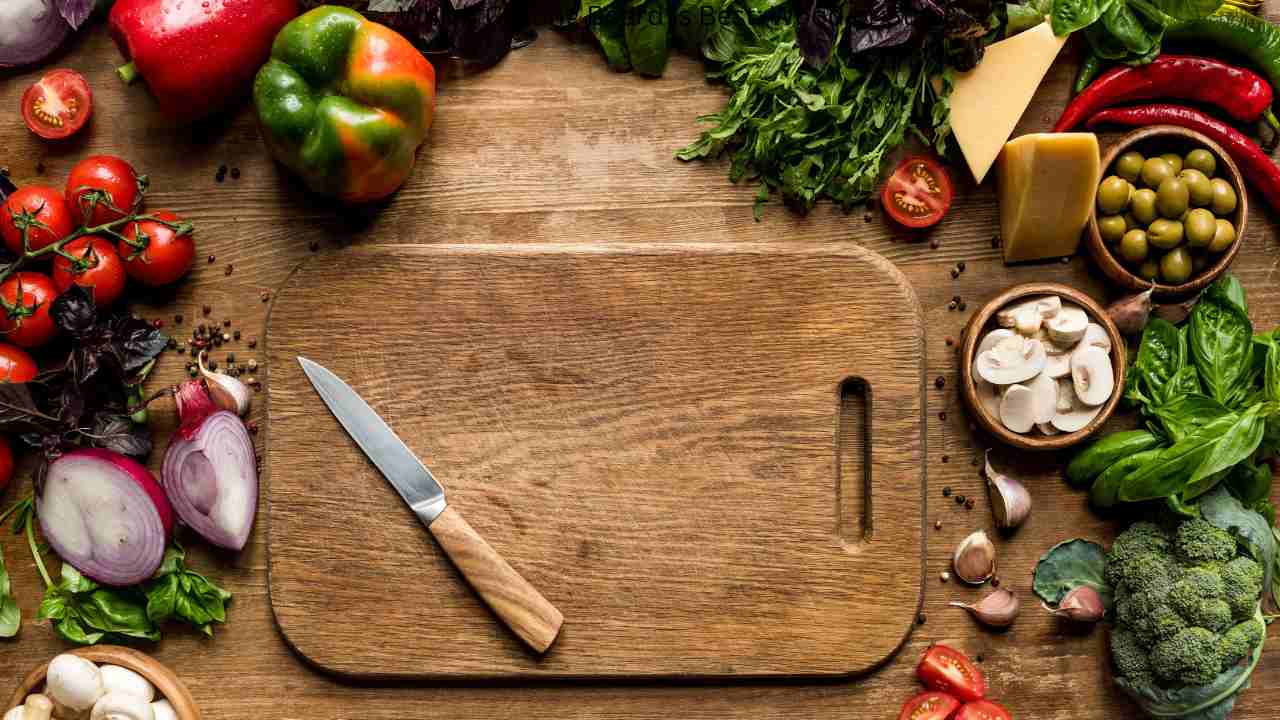When setting up your kitchen, one essential decision is choosing the right cutting board. Among the many options, wood and steel cutting boards are two of the most debated choices. But which cutting board is best: wood or steel? Each material has unique benefits, and selecting the right one depends on your kitchen needs and preferences.
This article will explore their differences, covering durability, hygiene, knife-friendliness, and maintenance, so you can confidently pick the perfect cutting board for your kitchen.
Which Cutting Board Is Best: Wood or Steel? Pros and Cons Explained

Comparing Wood and Steel Cutting Boards
When comparing wood and steel cutting boards, factors such as durability, hygiene, and practicality come into play. Let’s break down the main differences to help you understand which one suits your kitchen best.
Durability and Longevity
Wood cutting boards, especially those made from hardwoods like maple, walnut, or cherry, are known for their durability. These boards have a self-healing property that helps them recover from minor knife marks, making them long-lasting with proper care.
Steel cutting boards, on the other hand, are nearly indestructible. They resist cracking, chipping, or breaking, making them ideal for heavy-duty use. However, steel boards can develop visible scratches over time, which may trap food particles if not cleaned properly.
Hygiene and Safety
Cutting board hygiene is a major concern, particularly when preparing raw meats. Wood cutting boards have natural antimicrobial properties, which help reduce bacterial growth. However, they require regular maintenance, including oiling and thorough cleaning, to ensure they remain sanitary.
Steel cutting boards are non-porous and easy to sanitize. They don’t absorb liquids or odors, making them a good choice for maintaining food safety. However, scratches on steel boards can become a breeding ground for bacteria, so consistent cleaning is essential.
Knife-Friendliness
Wood cutting boards are more forgiving on knife edges, helping to preserve their sharpness over time. Hardwoods offer the perfect balance of being sturdy while still gentle on knives.
In contrast, steel cutting boards are much harder than wood and can dull knife blades with frequent use. This means you’ll need to sharpen your knives more often if you use a steel cutting board regularly.
Appearance and Aesthetics
Wood cutting boards bring warmth and natural beauty to the kitchen. They often double as serving platters for bread, cheese, or charcuterie, making them versatile for both food preparation and presentation.
Steel cutting boards offer a sleek and modern look, ideal for contemporary kitchens. However, their utilitarian design lacks the charm of wood boards and may not be as visually appealing for serving.
Pros and Cons of Wood and Steel Cutting Boards
| Feature | Wood Cutting Boards | Steel Cutting Boards |
|---|---|---|
| Durability | Durable and self-healing for knife marks | Extremely durable but prone to scratches |
| Hygiene | Natural antimicrobial properties | Easy to sanitize; non-porous surface |
| Knife-Friendliness | Gentle on knife edges | Can dull knives over time |
| Appearance | Warm, natural, and aesthetic | Sleek and modern |
| Maintenance | Requires regular oiling and cleaning | Low maintenance but scratches can trap food particles |
How to Decide Between Wood and Steel Cutting Boards

When to Choose Wood
- If You Value Knife Preservation: Wood boards are gentler on knives, making them ideal for daily chopping.
- For Aesthetic Appeal: Wood cutting boards add a natural and elegant look to your kitchen and can double as serving trays.
- For Long-Term Use: With proper maintenance, wood boards can last for years, even decades.
When to Choose Steel
- For Heavy-Duty Tasks: Steel cutting boards are excellent for tasks requiring durability, such as cutting through tough meats.
- For Easy Cleaning: Steel is perfect if you prioritize easy sanitization and low maintenance.
- For Modern Kitchens: Steel cutting boards complement minimalist and industrial kitchen designs.
Tips for Maintaining Your Cutting Boards
Wood Cutting Board Care
- Oiling: Apply food-grade mineral oil monthly to prevent cracking and maintain the board’s antibacterial properties.
- Cleaning: Wash with mild soap and water after each use. Avoid soaking to prevent warping.
- Deep Cleaning: For stains, use a mixture of baking soda and lemon juice or sand the surface lightly and reapply oil.
Steel Cutting Board Care
- Cleaning: Wash with warm water and mild detergent. Use a non-abrasive sponge to avoid scratches.
- Drying: Always dry the board immediately to prevent water spots.
- Scratch Management: Buff out minor scratches with a fine steel wool pad to maintain a smooth surface.
These cutting board hygiene tips can help ensure that your boards remain safe and last longer, regardless of the material.
Related Article: How to Pick the Best Cutting Board for Your Food Preparation
Conclusion:
Which Cutting Board Is Best: Wood or Steel? Choosing between wood and steel cutting boards ultimately depends on your needs and cooking style. Wood cutting boards are perfect for those who prioritize aesthetics, knife-friendliness, and a timeless design. On the other hand, steel cutting boards are ideal for heavy-duty tasks, low maintenance, and modern kitchens.
Whichever you choose, maintaining it properly will ensure you get the best out of your cutting board for years to come.
FAQ’s
Which cutting board is better for knives: wood or steel?
Wood cutting boards are gentler on knives and help preserve their sharpness, making them a better choice for frequent use.
Are steel cutting boards safe for food preparation?
Yes, steel cutting boards are safe and hygienic. However, scratches on their surface can trap food particles, so regular cleaning is essential.
How often should I oil a wood cutting board?
You should oil a wood cutting board every 3-4 weeks to maintain its durability and prevent cracking.
Do steel cutting boards rust over time?
Most steel cutting boards are made from stainless steel, which is rust-resistant. However, proper drying after cleaning is essential to prevent water spots or corrosion.
What are the best cutting boards for heavy-duty tasks?
Steel cutting boards are ideal for heavy-duty tasks like chopping bones or tough vegetables due to their extreme durability.


One thought on “Which Cutting Board Is Best: Wood or Steel? Find the Perfect Choice for Your Kitchen”